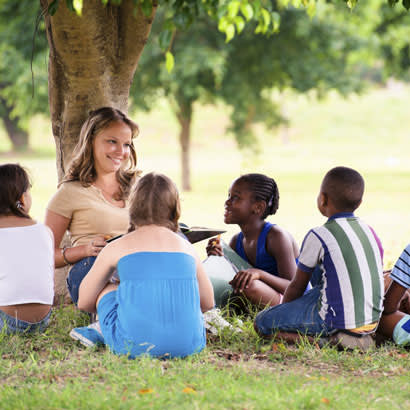
The NRPA Parks Snapshot provides the latest data on how park and recreation leaders from across the country are confronting the Coronavirus Disease 2019 (COVID-19) pandemic. I hope you find this information helpful as you make decisions at your agency during this uncertain time, while continuing to follow the guidance provided by your local and state governments and health officials, as well as the Centers for Disease Control and Prevention (CDC).
Among the key findings from the August 5-7 survey:
What's Open/What's Closed
Virtually all agencies are keeping open all of their trails (98 percent) and parks (local parks: 92 percent; regional parks: 91 percent).
Other amenities fully open across the nation include:
- Golf courses (97 percent)
- Dog parks (96 percent)
- Tennis courts (92 percent)
- Beaches for walking (91 percent)
- Community gardens (89 percent)
- Skateparks (87 percent)
- Beaches for swimming (80 percent)
- Outdoor sports fields (74 percent)
- Temporary restroom facilities (70 percent)
- Campgrounds (69 percent)
- Basketball courts (66 percent)
- Permanent restrooms at outdoor amenities (65 percent)
- Playgrounds (61 percent)
- Outdoor pools (44 percent)
- Indoor aquatic centers (40 percent)
On the flip side, many agencies are keeping closed all of their:
- Senior centers (83 percent)
- Splash pads (63 percent)
- Indoor gyms (62 percent)
- Drinking fountains (52 percent)
- Recreation centers (45 percent)
Plans for Educational Support
As school districts roll out their fall teaching plans, park and recreation leaders and their agencies have identified ways to support students, teachers and families. Three in five park and recreation agencies are making plans to support students this fall, whether through expanded childcare offerings or by offering resources to support education efforts. Among these offerings are:
- Expanded childcare services and hours to support virtual education (27 percent)
- Incorporating supplemental education activities — like physical activity, music, arts, STEM, reading/writing, social skills — into childcare programs (19 percent)
- Providing meals and snacks to food-insecure youth at park and recreation sites (15 percent)
- Providing outdoor facility space to schools to serve as classrooms or for activities (15 percent)
- Expanding access to free WIFI to support virtual education for students (15 percent)
Currently, 43 percent of agencies are coordinating efforts between park and recreation leaders and local school districts to provide youth and their families the best possible services during this time. Among the top ways school districts are engaging with park and recreation agencies are:
- Consulting with local agency to provide expanded childcare offerings due to no/decreased in-person school offerings
- Coordinating with local agency to identify additional facility space for learning (e.g., space for outdoor classes/activities, recreation centers used for additional classrooms)
- Coordinating with local agency to utilize park and recreation staff with subject matter expertise and unique skills (e.g., environmental education, physical education, music, arts)
Fall Programming
Most agencies continue to evolve their fall programming schedules as situations change within their community. Fall programming currently on hold pending additional guidance includes:
- Contact sports leagues (41 percent)
- Sports tournaments at agency facilities (28 percent)
- 5K races and other running/walking events (27 percent)
- Festivals/concerts (26 percent)
- Preschool offerings (25 percent)
- Childcare for children of the general public (25 percent)
An increasing number of agencies, however, have canceled some of their fall offerings, especially those that involve large groups. Canceled fall activities include:
- Festivals/concerts (59 percent)
- 5K races and other running/walking events (42 percent)
- Sports tournaments at agency facilities (32 percent)
- Contact sports leagues (24 percent)
- Childcare for the general public (18 percent)
Protecting Your Team
Park and recreation professionals are essential workers. Agency leaders continue to ensure the safety of workers by:
- Providing face coverings and other personal protective equipment (PPE) to staff (96 percent)
- Providing employees with disinfectant and cleaning supplies for workspaces (95 percent)
- Limiting the use of shared spaces (88 percent)
- Using technology to promote physical distancing (e.g., telework, virtual meetings) (85 percent)
- Requiring face coverings on the job (84 percent)
- Reminding workers of available support services and leave policies (81 percent)
- Training employees on personal protective measures (e.g., cleaning, use of PPEs) (79 percent)
- Altering workspaces to maintain safe physical distance (75 percent)
- Ensuring ventilation and water systems operate properly (50 percent)
COVID-19 Liability
The vast majority of park and recreation agencies inform users/registrants/participants of the potential risks associated with COVID-19 using signage and/or signed legal waivers. Posted signage is predominately used in open spaces (including, parks, fields, trails).
Agencies require signed legal waivers for:
- Childcare (summer camps, etc.) (74 percent)
- Sports leagues (58 percent)
- Recreation/Fitness centers (47 percent)
- Pools/Aquatic centers (44 percent)
Similarly, agencies are posting signage informing users of risks at:
- Recreation centers/Fitness centers (80 percent)
- Open spaces (including parks, fields, trails) (78 percent)
- Pools/Aquatic centers (78 percent)
- Childcare (71 percent)
- Sports leagues (68 percent)
In addition, here are survey results for specific segments:
- Large metropolitan areas
- Small metropolitan areas and rural locales
- Agencies located in areas partially open
- Agencies located where all services are permitted by health authorities
The full results of the survey include verbatim comments shared by park and recreation leaders across the nation on their agencies’ experiences in confronting COVID-19. This is an uncertain time with many unanswered questions, and we encourage you to continue the conversation with your colleagues around how your agency is confronting COVID-19 on NRPA Connect.
For more information and to see results from additional surveys, visit NRPA's Parks Snapshot Surveys webpage.
For more information about NRPA’s response to COVID-19, as well as available resources for park and recreation professionals, please see our Coronavirus Disease 2019 (COVID-19) webpage.
Kevin Roth is Vice President of Research, Evaluation and Technology at NRPA.

